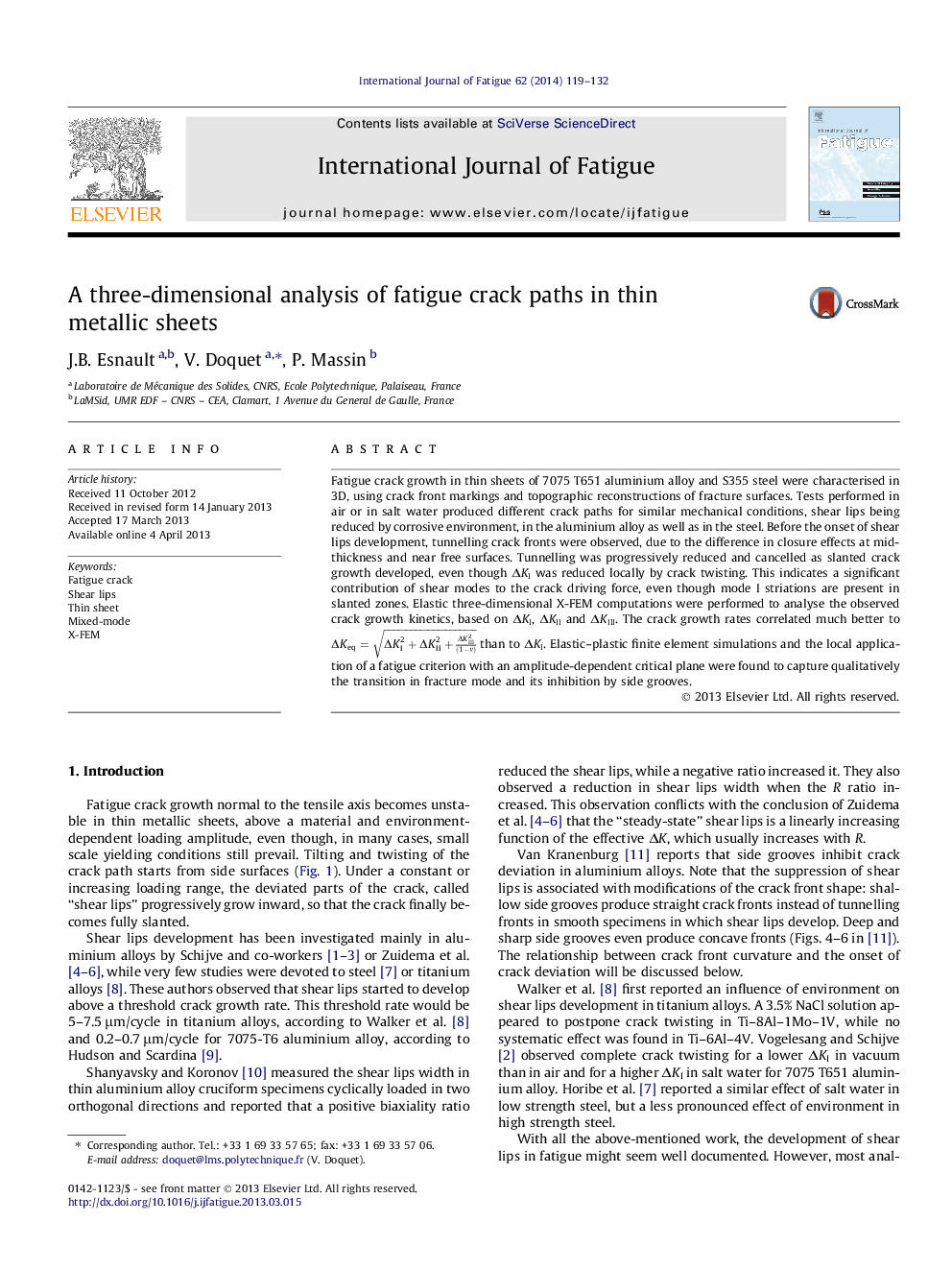| Article ID | Journal | Published Year | Pages | File Type |
|---|---|---|---|---|
| 7172312 | International Journal of Fatigue | 2014 | 14 Pages |
Abstract
Fatigue crack growth in thin sheets of 7075 T651 aluminium alloy and S355 steel were characterised in 3D, using crack front markings and topographic reconstructions of fracture surfaces. Tests performed in air or in salt water produced different crack paths for similar mechanical conditions, shear lips being reduced by corrosive environment, in the aluminium alloy as well as in the steel. Before the onset of shear lips development, tunnelling crack fronts were observed, due to the difference in closure effects at mid-thickness and near free surfaces. Tunnelling was progressively reduced and cancelled as slanted crack growth developed, even though ÎKI was reduced locally by crack twisting. This indicates a significant contribution of shear modes to the crack driving force, even though mode I striations are present in slanted zones. Elastic three-dimensional X-FEM computations were performed to analyse the observed crack growth kinetics, based on ÎKI, ÎKII and ÎKIII. The crack growth rates correlated much better to ÎKeq=ÎKI2+ÎKII2+ÎKIII2(1-ν) than to ÎKI. Elastic-plastic finite element simulations and the local application of a fatigue criterion with an amplitude-dependent critical plane were found to capture qualitatively the transition in fracture mode and its inhibition by side grooves.
Related Topics
Physical Sciences and Engineering
Engineering
Mechanical Engineering
Authors
J.B. Esnault, V. Doquet, P. Massin,
